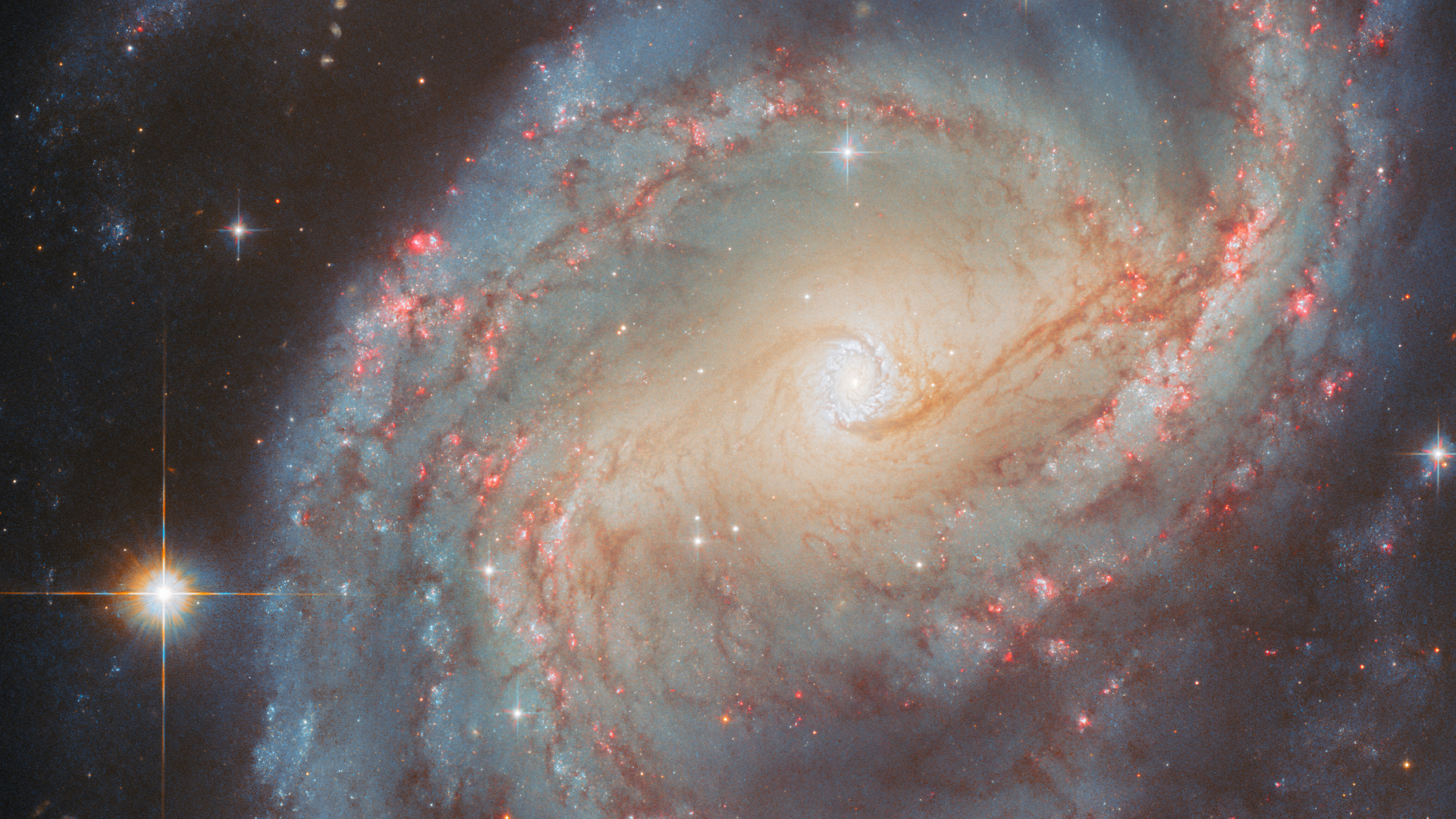Hubble spies a glowing 'starburst ring' | Space photo of the day for Oct. 20, 2025
Images like this from Hubble gives astronomers a front-row seat to the ongoing cycle of galactic creation.

In the constellation Cepheus lies the barred spiral galaxy NGC 6951. Due to its stellar activity, the galaxy has become a favorite for astronomers using the Hubble Space Telescope.
What is it?
Orbiting above Earth's atmosphere, Hubble observes galaxies like NGC 6951 in visible and infrared light, capturing details that ground-based telescopes cannot. Its images have illuminated how galaxies form, evolve and recycle their material through generations of star birth and death.
In Hubble's recent image, NGC 6951 unfurls its graceful spiral arms, covered in red nebulae glowing with hydrogen gas, a key fuel for new stars.
Where is it?
The spiral galaxy NGC 6951 is located 70 million light-years from Earth, in the constellation Cepheus.
Why is it amazing?
Crossing the core of NGC 6951 is a bar of stars, a common feature in elongated spiral galaxies that acts as a kind of galactic conveyor belt, channeling gas inward toward the nucleus. That flow of gas gives rise to one of the galaxy's most captivating features: a circumnuclear starburst ring about 3,800 light years wide that encircles the galactic heart.
Within this ring, the conditions are just right for an intense burst of star formation. The bar funnels cold gas to the central region, where it collects and compresses, triggering the birth of new stars at a significant rate. Using Hubble's data, astronomers have identified more than 80 possible star clusters inside this ring, many less than 100 million years old, though the spiral galaxy itself has likely persisted for over a billion years.
Want to learn more?
You can learn more about the Hubble Telescope and the process of stellar evolution.
Breaking space news, the latest updates on rocket launches, skywatching events and more!
Kenna Hughes-Castleberry is the Content Manager at Space.com. Formerly, she was the Science Communicator at JILA, a physics research institute. Kenna is also a freelance science journalist. Her beats include quantum technology, AI, animal intelligence, corvids, and cephalopods.
You must confirm your public display name before commenting
Please logout and then login again, you will then be prompted to enter your display name.

